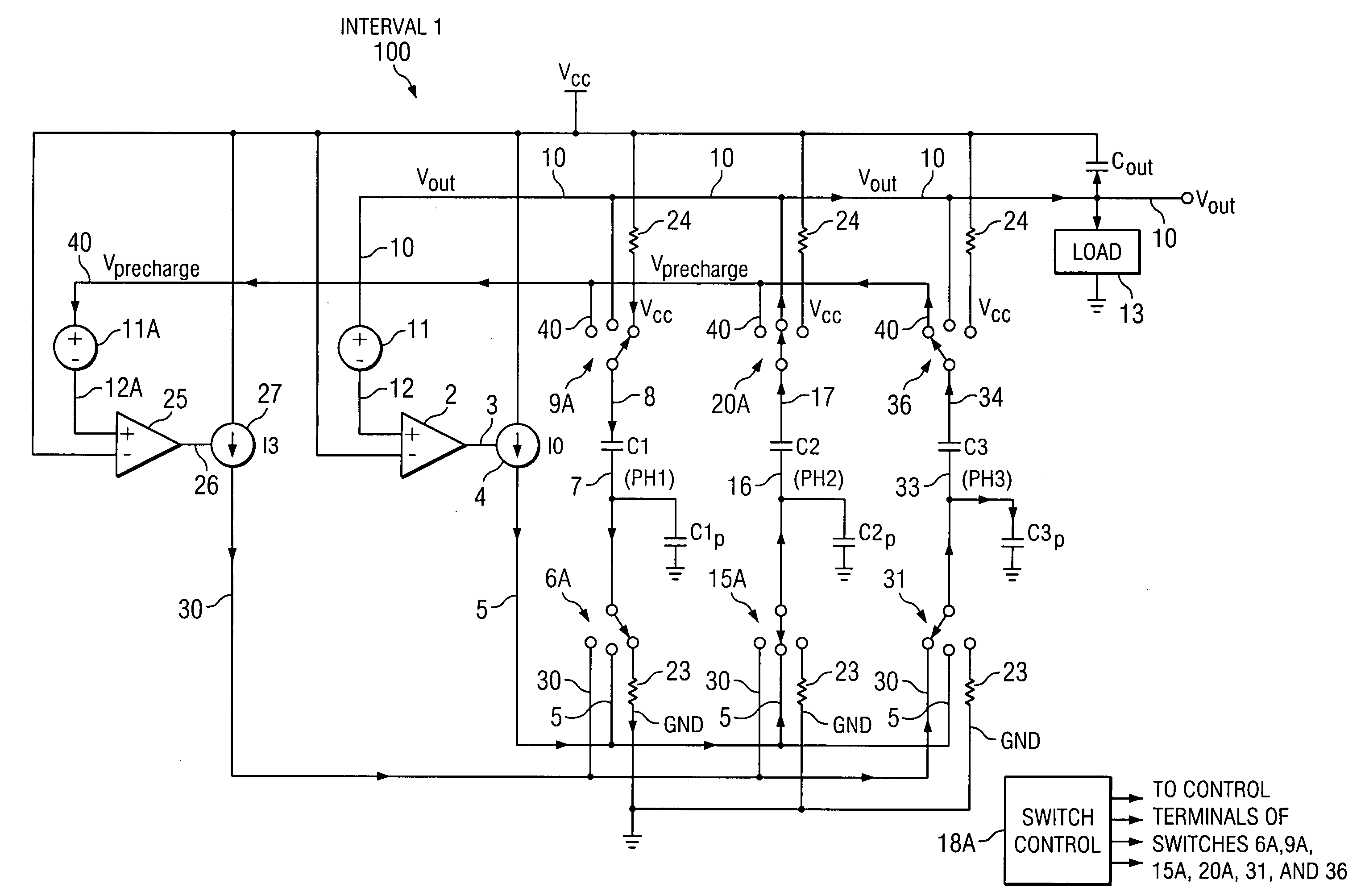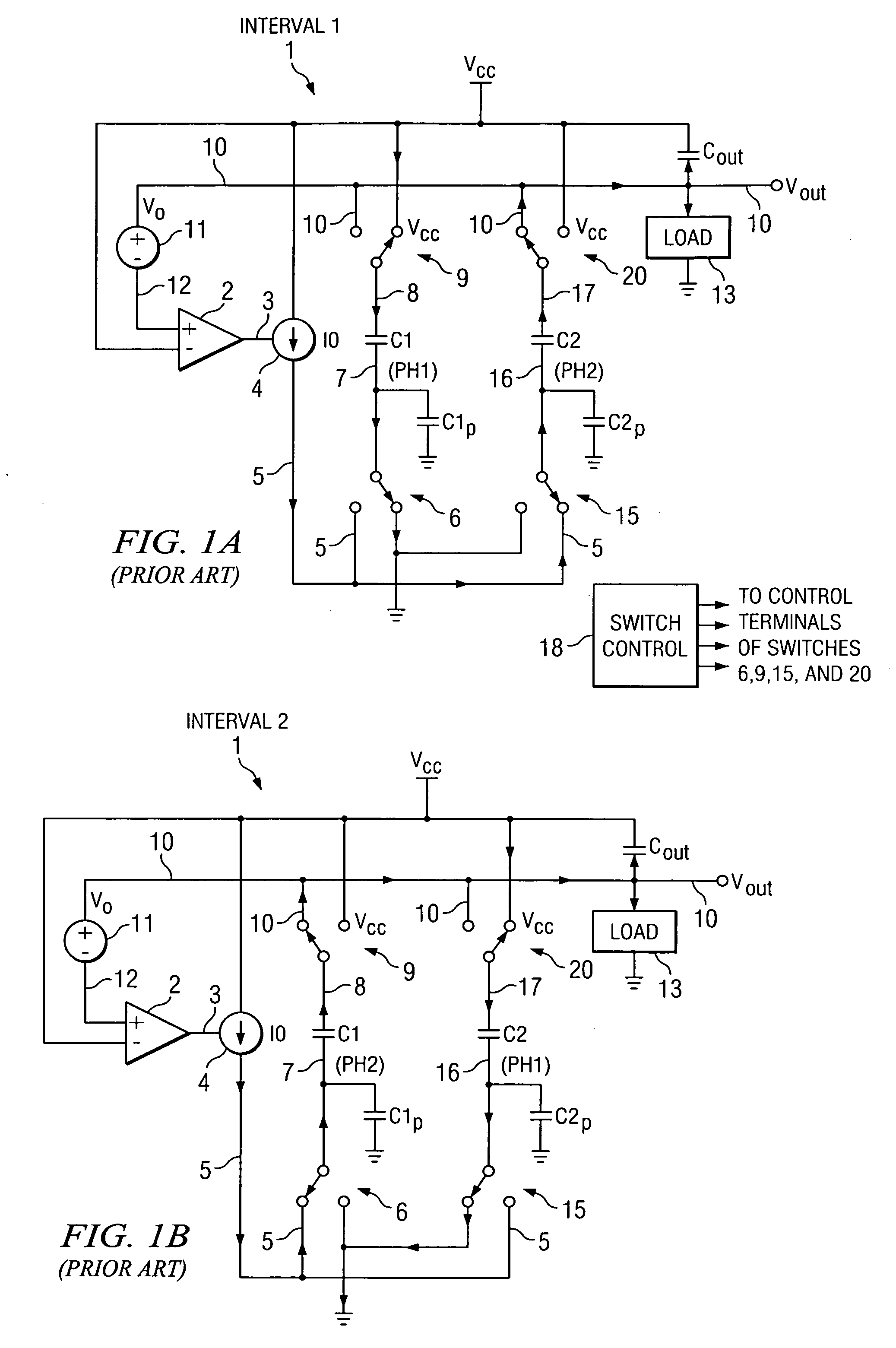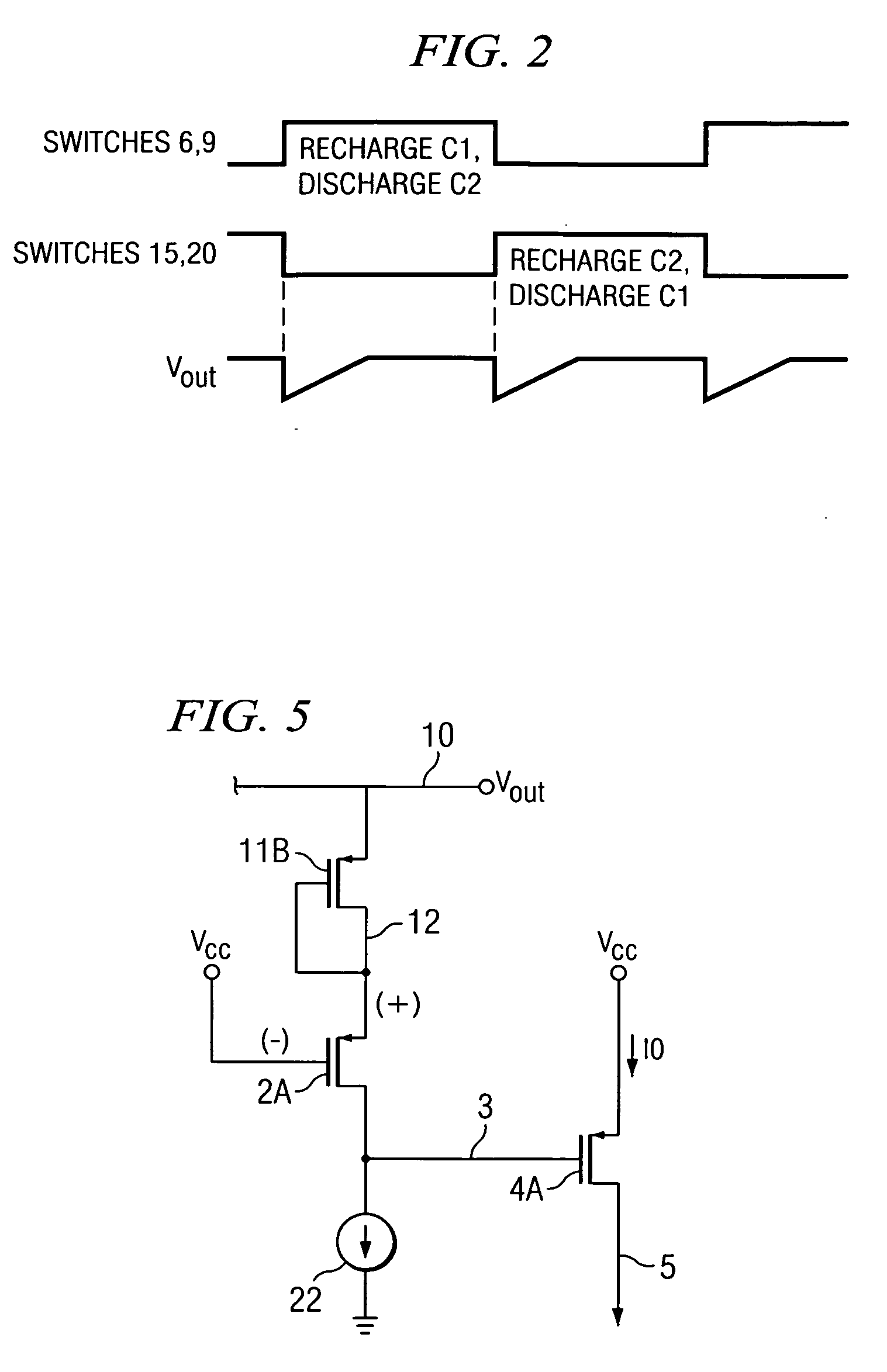Three-phase low noise charge pump and method
a charge pump and low noise technology, applied in the field of three-phase low noise charge pump and method, can solve the problems of fast negative-going spike in vout, noise-producing transient process, and problem of internal supply generation through charge pump circuit,
- Summary
- Abstract
- Description
- Claims
- Application Information
AI Technical Summary
Benefits of technology
Problems solved by technology
Method used
Image
Examples
Embodiment Construction
[0030] The method and structure of the present invention are utilized to provide a very low noise charge pump circuit. This is accomplished by providing a three-phase charge pump circuit 100 shown in FIG. 3A having three flying capacitors, each having three phases of operation. An additional “phase 3” (PH3) of operation of each flying capacitor and associated circuitry occurs between the previously described “phase 1” (PH1) and “phase 2” (PH2)operations of previously described prior art charge pump 1 of FIG. 1A.
[0031]FIG. 3A shows a charge pump circuit 100, which includes an amplifying circuit 2 having an output 3 connected to a control terminal of a controlled current source 4. Controlled current source 4 produces a controlled current 10, wherein the amount of controlled current 10 is determined by load demand of reservoir capacitor Cout and load 13 and also by the feedback loop being controlled through operation of amplifier 2. The (−) input of amplifier 2 is connected to VCC. Th...
PUM
 Login to View More
Login to View More Abstract
Description
Claims
Application Information
 Login to View More
Login to View More - R&D
- Intellectual Property
- Life Sciences
- Materials
- Tech Scout
- Unparalleled Data Quality
- Higher Quality Content
- 60% Fewer Hallucinations
Browse by: Latest US Patents, China's latest patents, Technical Efficacy Thesaurus, Application Domain, Technology Topic, Popular Technical Reports.
© 2025 PatSnap. All rights reserved.Legal|Privacy policy|Modern Slavery Act Transparency Statement|Sitemap|About US| Contact US: help@patsnap.com



